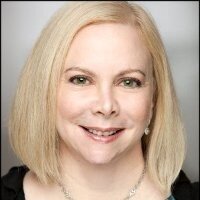About Me
I live on my own in New York City with my two Siamese cats, Pasha and Colette. I was raised as a secular Jew and was not very inspired by the years I spent in Hebrew School to embrace my religion as an adult. I made an effort to attend open services on the High Holidays but never joined a synagogue. To be honest, I was not very inspired by the rigid religious education that I received as a child.
And then something happened. I was diagnosed with breast cancer over a year ago. The diagnosis shattered the core of who I thought I was. I had never received a serious medical diagnosis before and never expected to have to contend with breast cancer. No one in my family ever had cancer and I thought I was extremely low risk for the disease. I did not keep up with any type of regular monitoring and before I was diagnosed, I went several years without a mammogram. The diagnosis was frightening, but I pushed ahead and completed my treatment over a year ago. I now live with the fear that it will come back, which is the new normal for me.
As a part of my recovery, I went to Israel as a tourist for just one-week in October 2019 and all of a sudden, I understood who I was as a Jew. I stayed for a week in the gorgeous Mamilla Hotel at the edge of the Old City of Jerusalem and walked the narrow alleyways and visited the stalls in the nearby markets. I floated in the Dead Sea and visited Masada, Bethlehem and Tel Aviv. I have never felt so at home anywhere in the world and hope to return to the country one day on a mission.
While I was processing all of this, I started reading about the Daf Yomi cycle, where people around the world read the same portion each day from the Talmud for 7 ½ years. A new cycle was scheduled to start again in early January, and it seemed like a good time to jump in and further my Jewish education. It was a commitment to being here in 7 years and completing the Daf Yomi cycle.
I made a promise to myself that I would post something about every day’s reading – no matter how inconsequential – in order to ensure I was taking the time to process what I was reading and not just skimming the surface. Although, in order to keep up each day with the pace, there is not always the opportunity to go as deeply as I would like. This blog is the result of that pledge.
The journey so far through the Talmud has been a difficult one. I have graduate degrees in Creative Writing and Library Science and an undergraduate degree in English Literature, and I am used to finding structure in the narratives that I read, or at least in the case of Thomas Pynchon’s novels, a certain logic in the lack of an obvious structure. I approach each day’s reading with the hope that even if there is not an obvious structure to the reading, that if I keep digging, I will find one; the Talmud, however, can be rambling at times, and follows a mysterious logic that I do not always understand. I try to find one thing each day that I can hold onto that makes that portion of the text meaningful.
I keep reminding myself that these readings reflect the opinion of a group of often dissenting Rabbis from 2,000 years ago. The world was very different then, and devoid of the modern tools that help organize our lives, such as clocks and standard calendars, modern medicine and science, and communication devices. And of course, there is the issue about the treatment of women. It is dificult not to become agitated when I read the text through my modern and secular lens. There are many days in my daily readings when I become so disheartened by the treatment of women that I don’t think I can push on. But there is always something -- a small thread, a metaphor, an observation from a Rabbi -- that keeps me going.
I named this blog “Broken Tablets” after the passage in the Berakhot 8 section of the Talmud. When Moses descended the mountain with the ten commandment tablets he found his people worshipping a golden calf. He was so angry that he smashed the tablets in half. He went back up the mountain and God gave him a new set to replace what he had broken. The broken pieces were placed in the Holy Arc along with the intact tablets. Berakhot 8 compares these tablets with the elderly and includes one of the most moving passages in my Talmud readings so far in its reminder to respect those who may have declined intellectually: “An elder who forgot the Torah knowledge he once possessed is likened to these broken tablets.” And so, with passages like these I soldier on each day with the readings.
